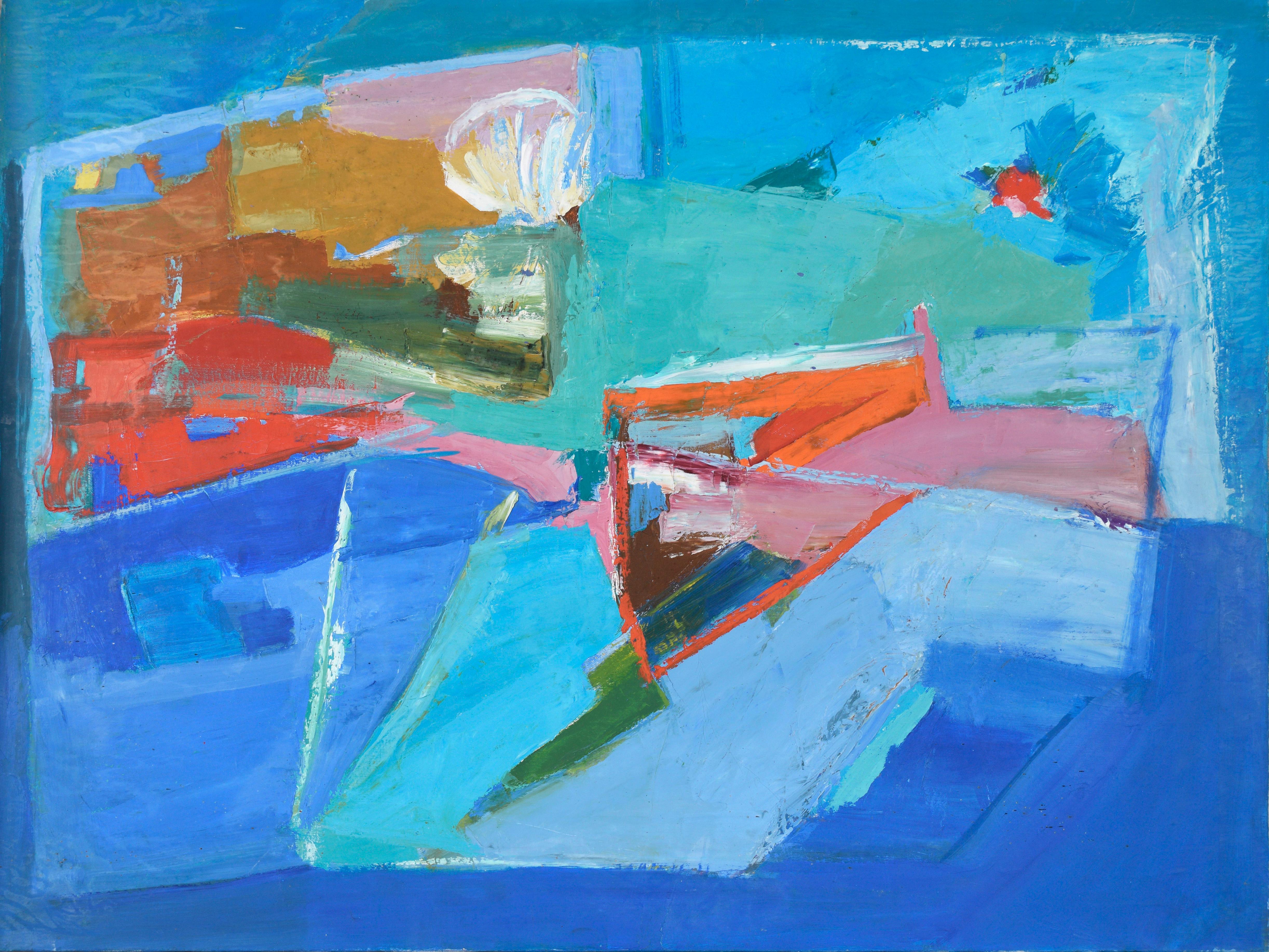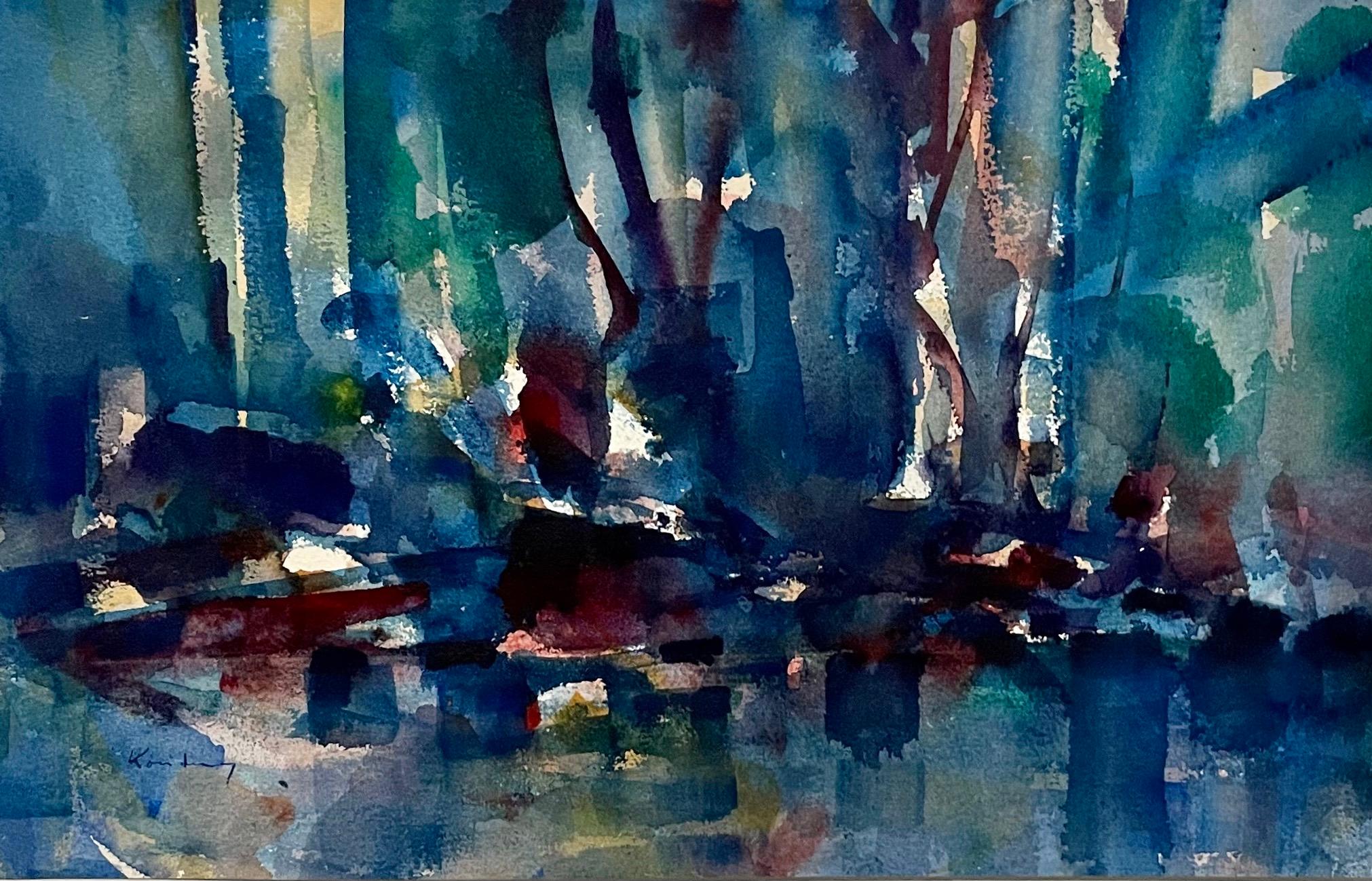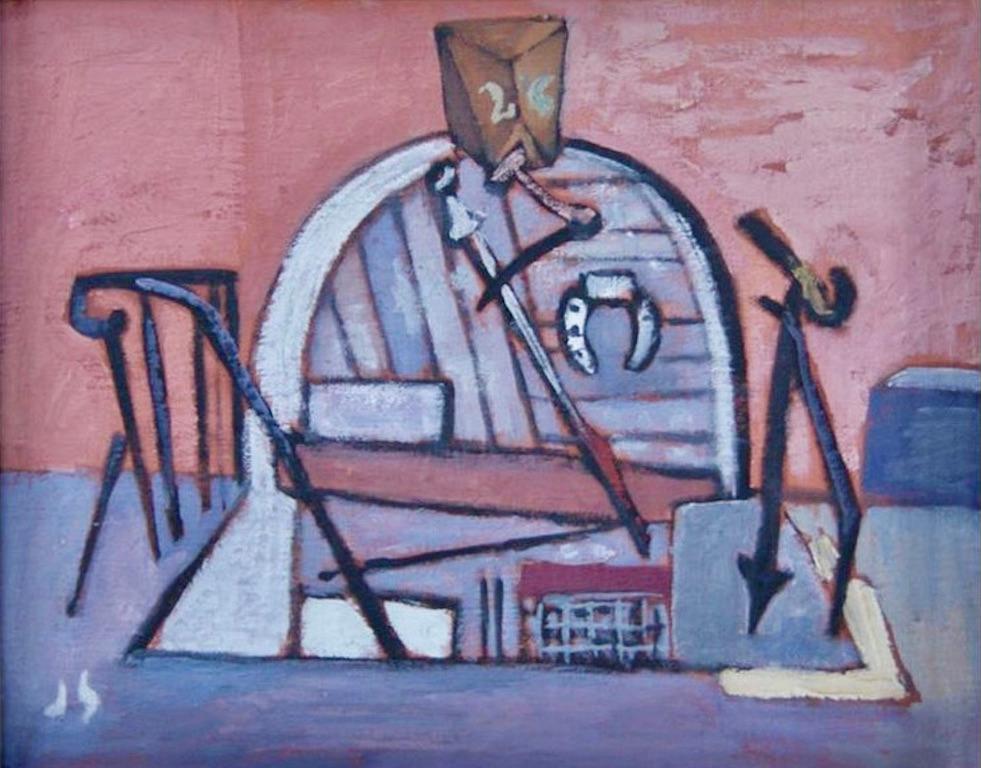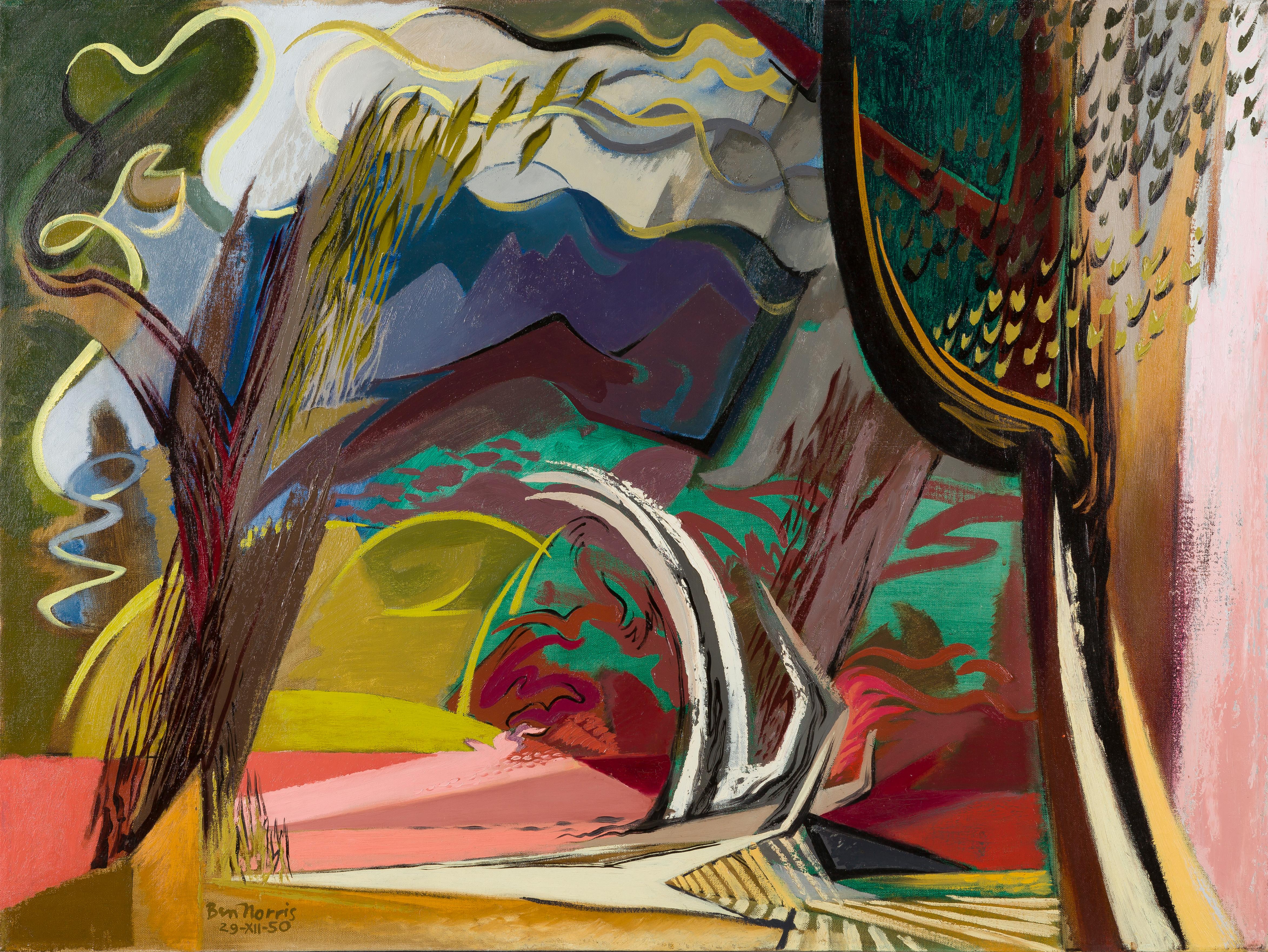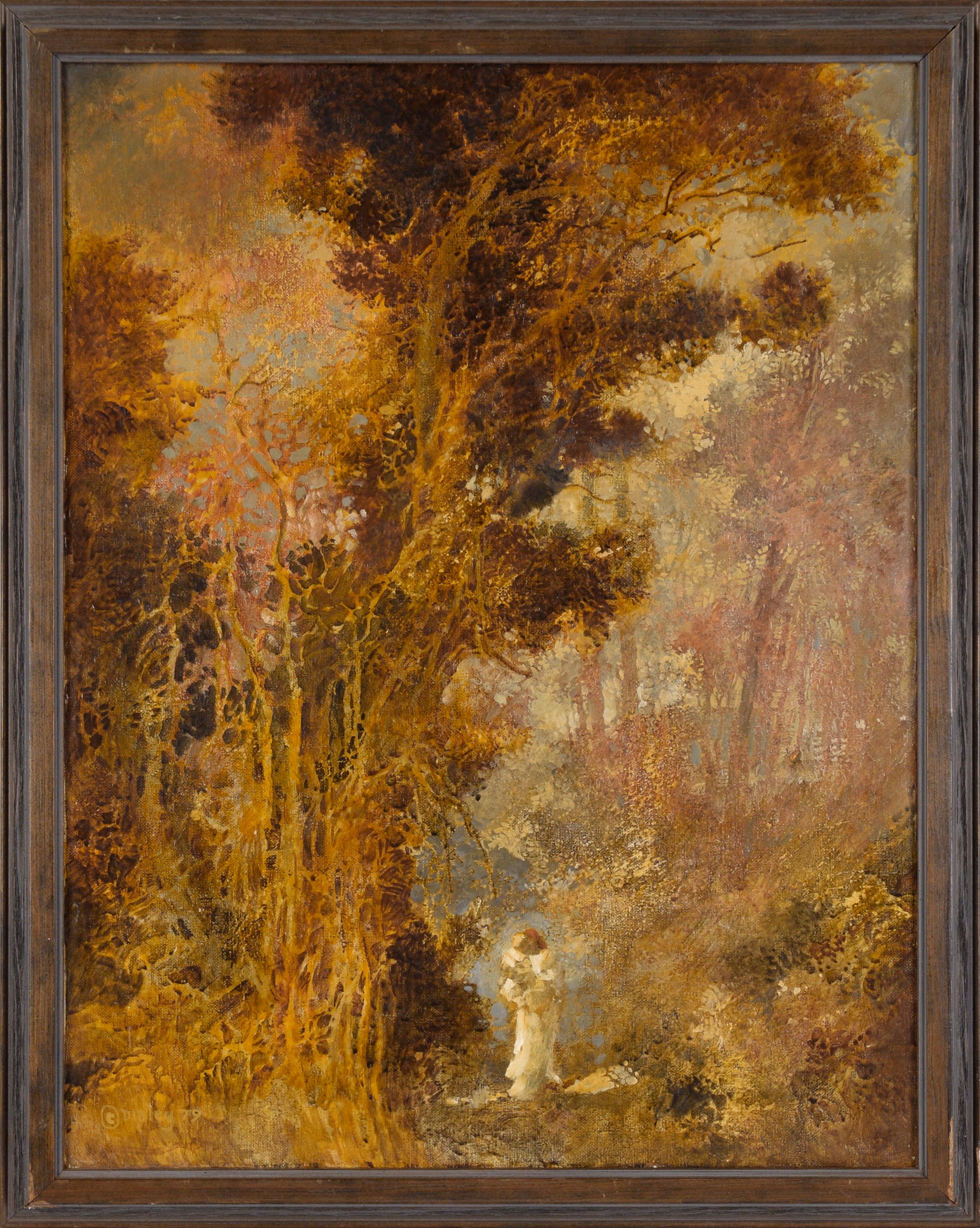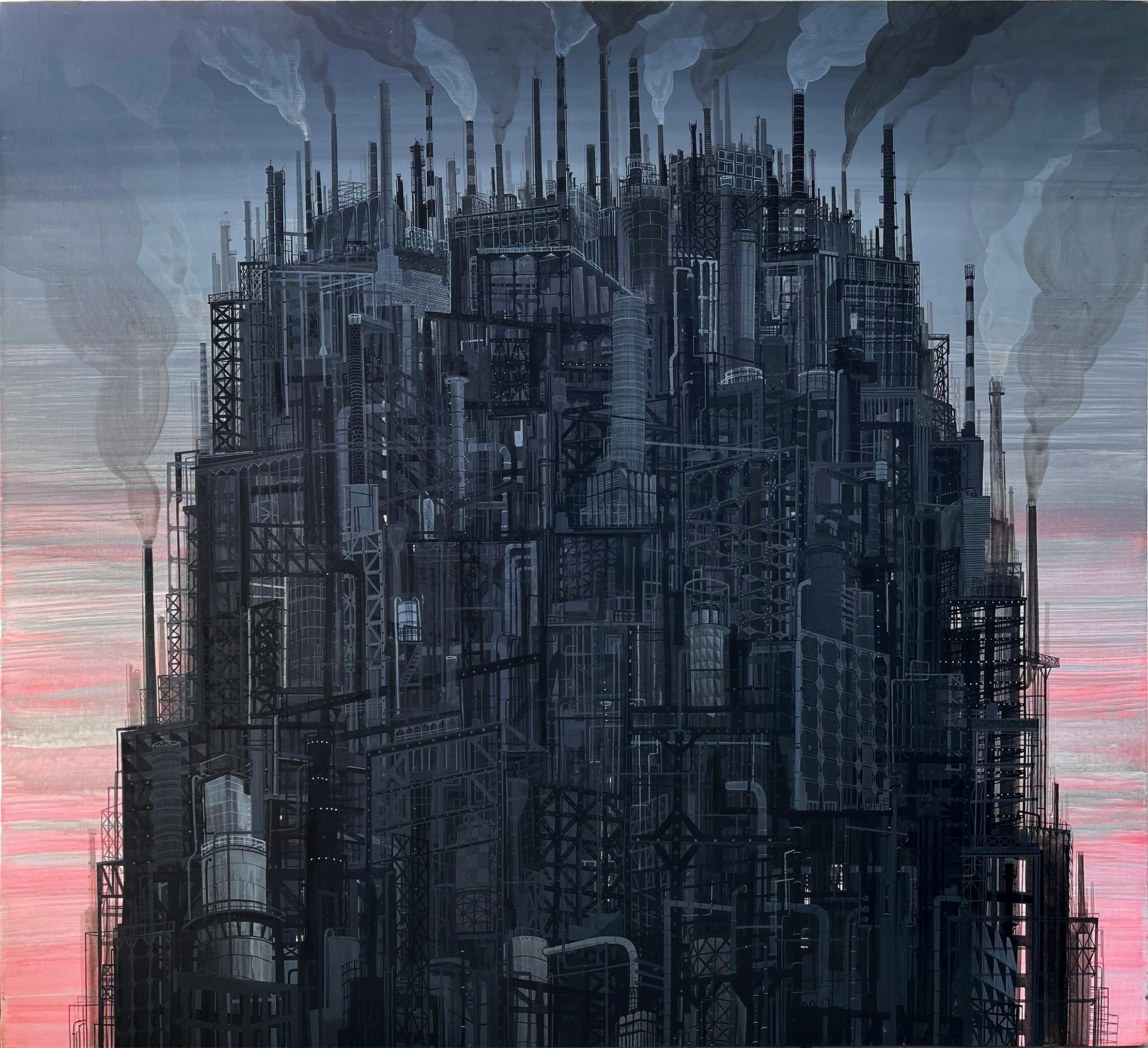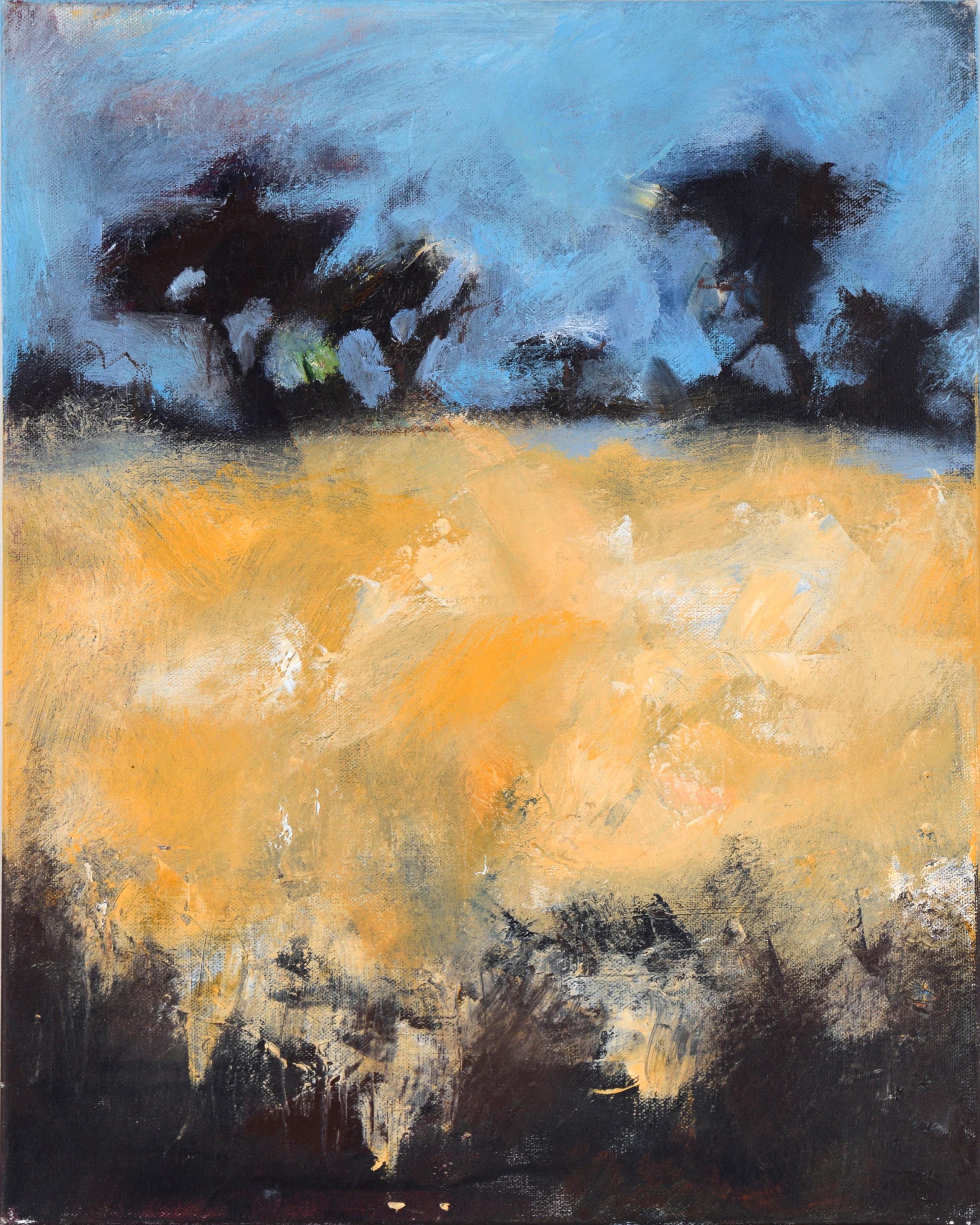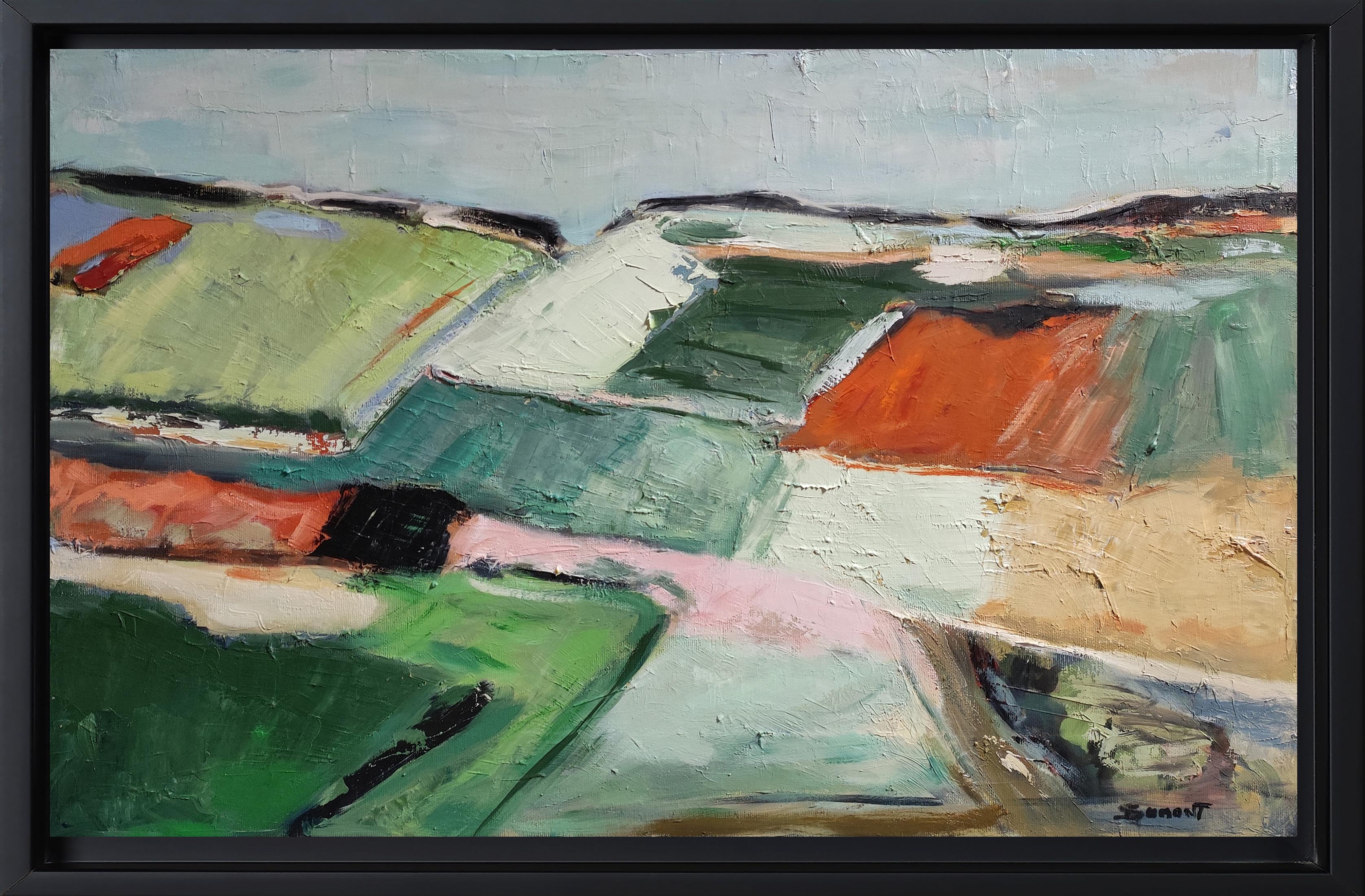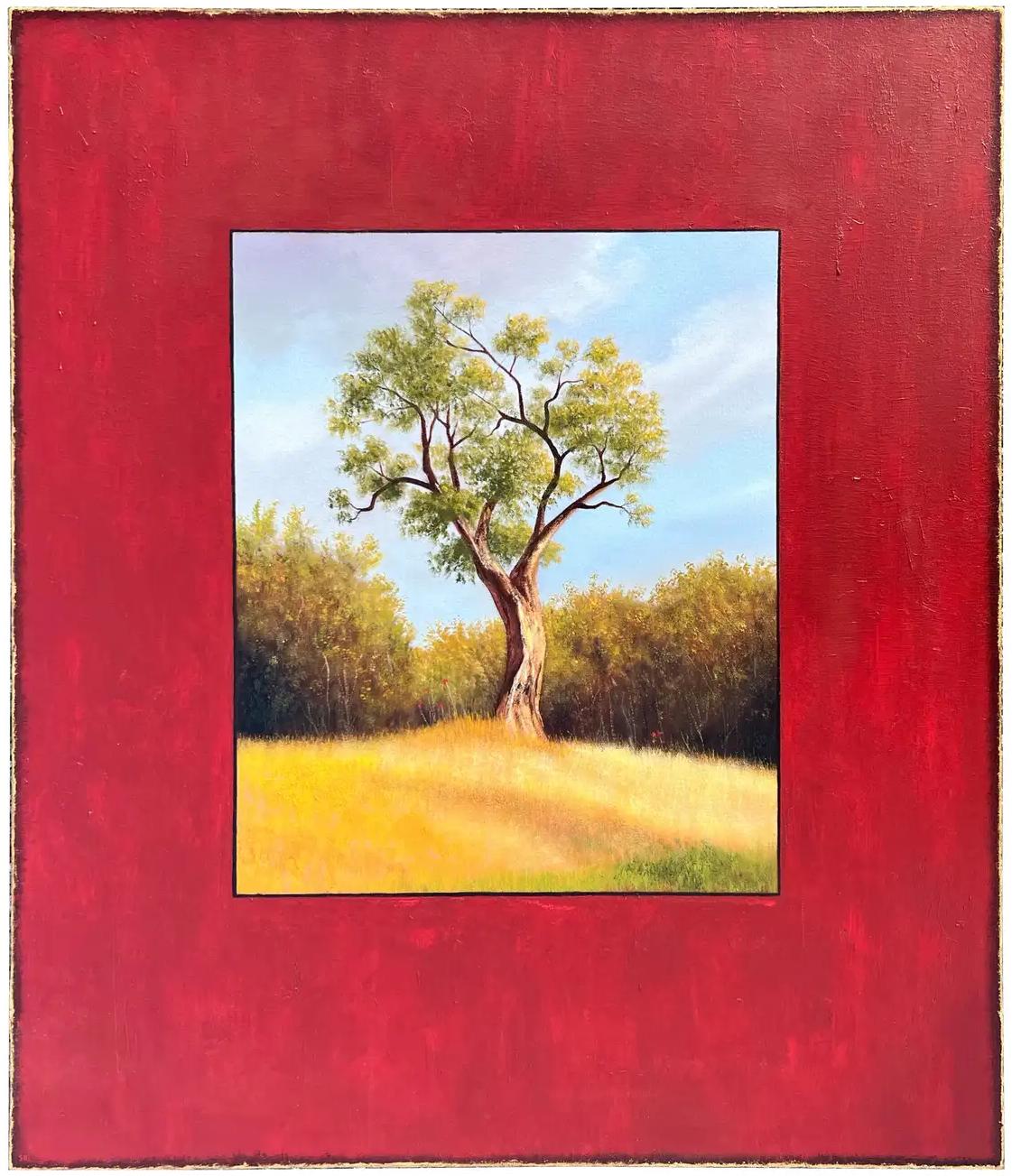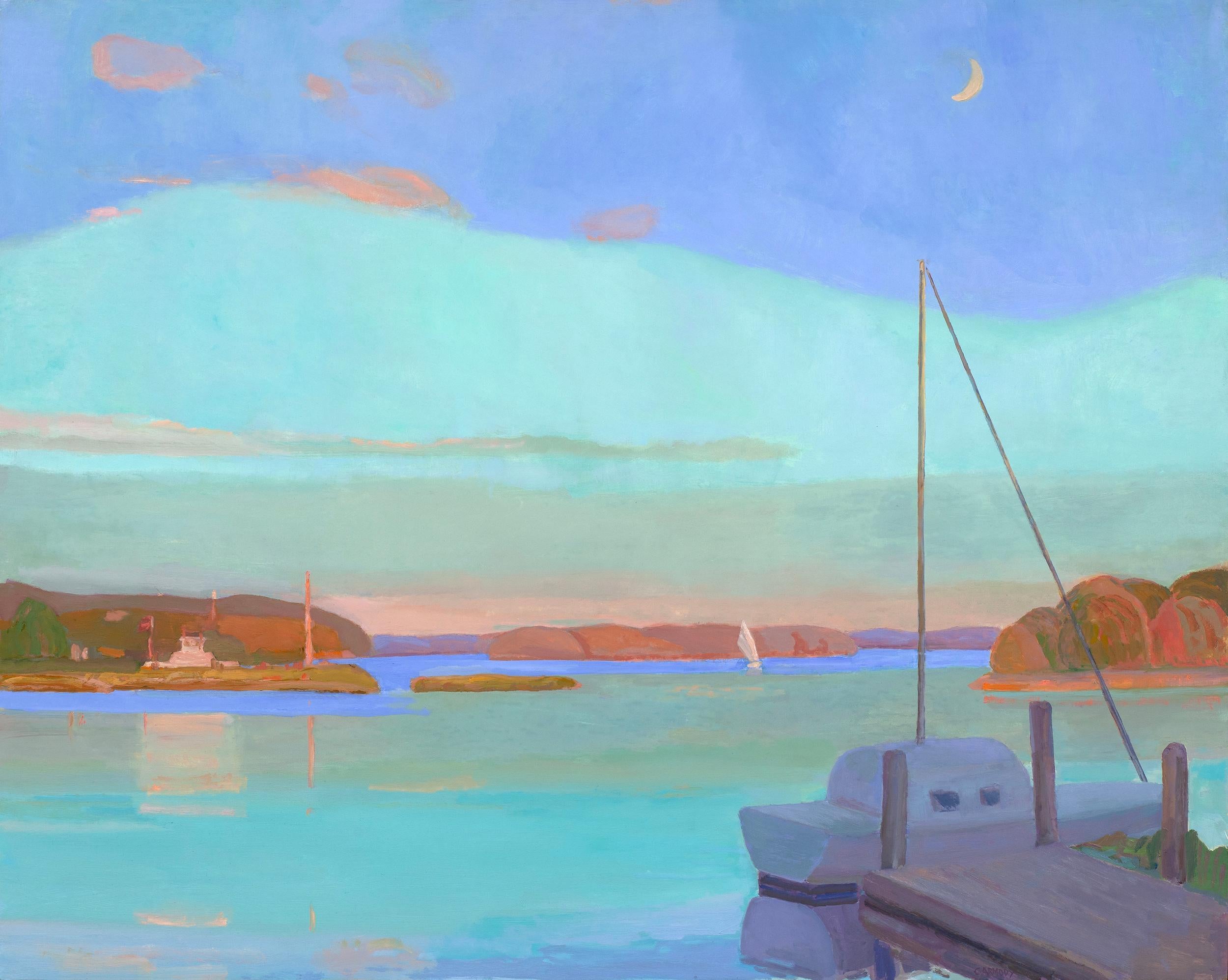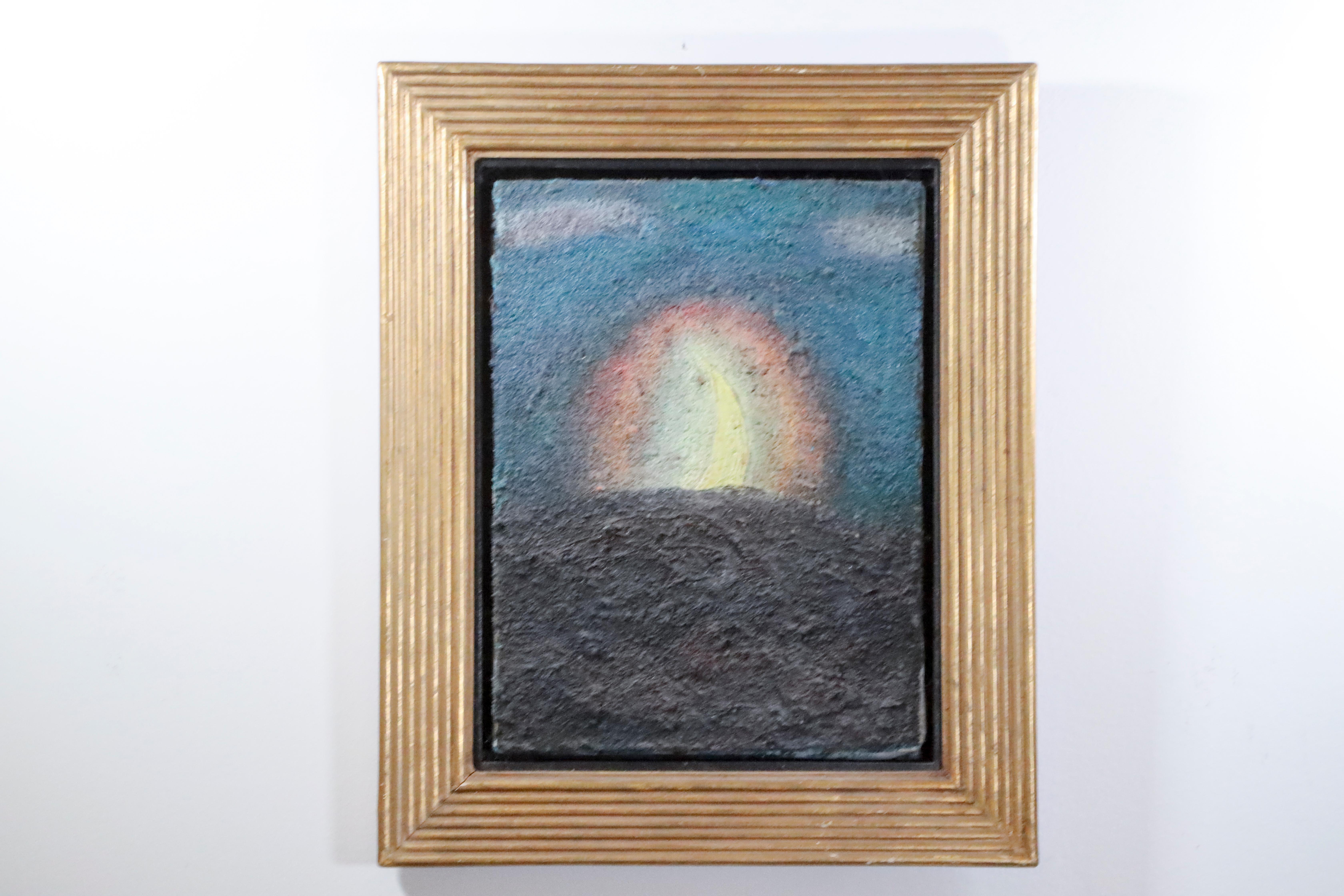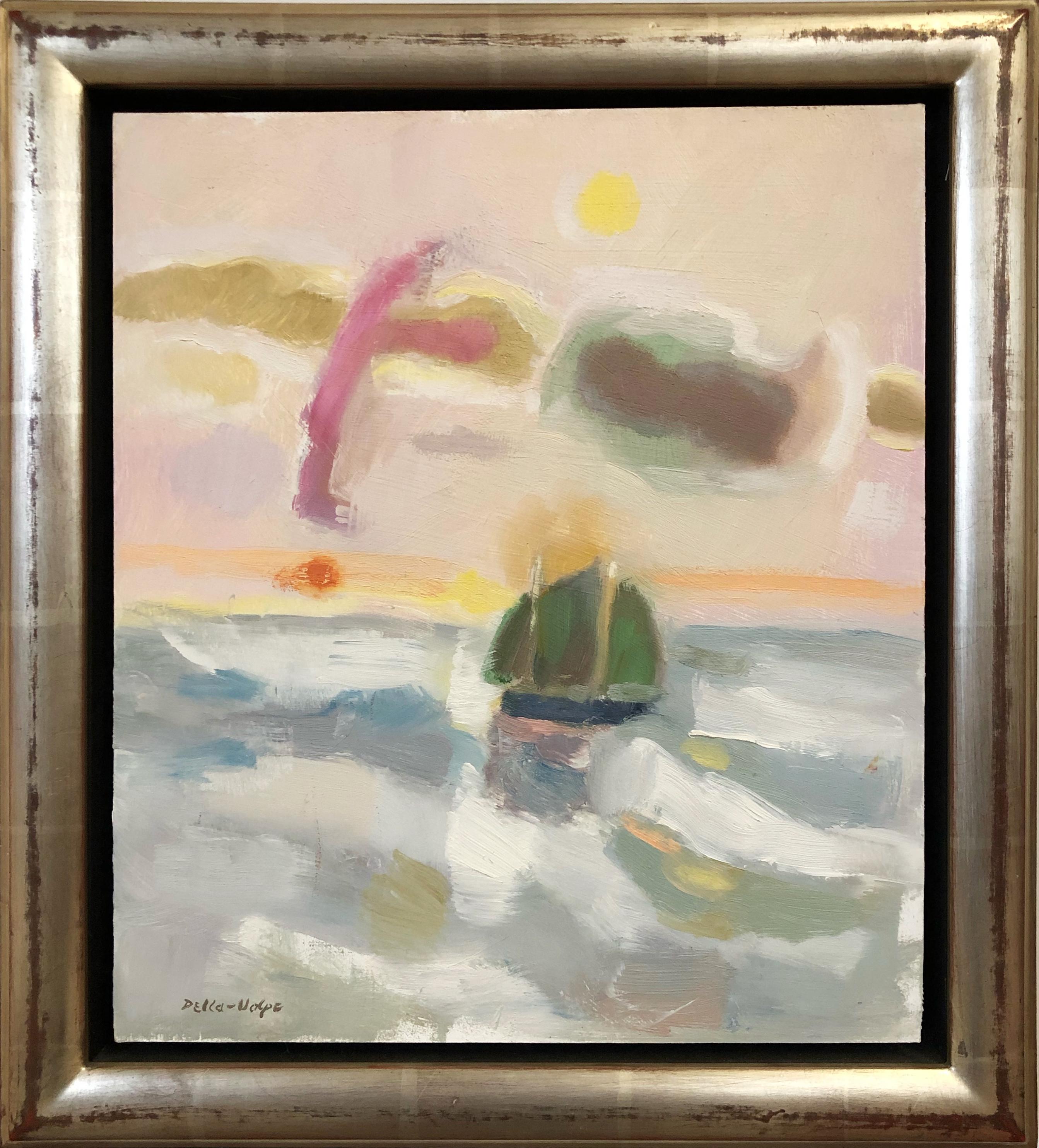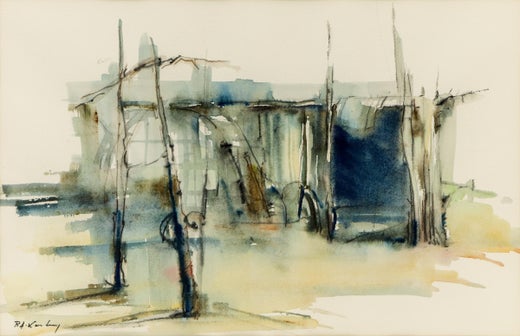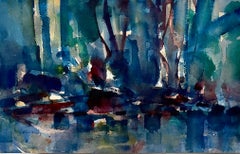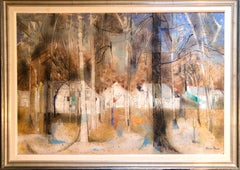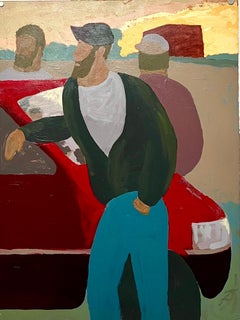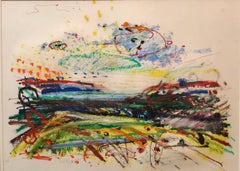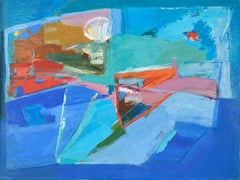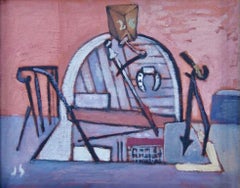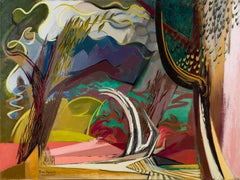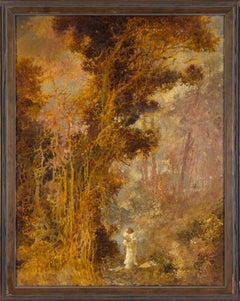
Modernist Abstract Expressionist Watercolor Painting Bauhaus Weimar Pawel Kontny
View Similar Items
Want more images or videos?
Request additional images or videos from the seller
1 of 5
Pawel KontnyModernist Abstract Expressionist Watercolor Painting Bauhaus Weimar Pawel Kontny
$1,000List Price
About the Item
- Creator:Pawel Kontny (1923 - 2002, Polish)
- Dimensions:Height: 9 in (22.86 cm)Width: 14 in (35.56 cm)
- Medium:
- Movement & Style:
- Period:
- Condition:
- Gallery Location:Surfside, FL
- Reference Number:1stDibs: LU3829739572
Pawel Kontny
A painter of subjects from many parts of the world, Pawel Kontny began with wartime sketches and changed to a technique combining abstraction and realism. He was born in Laurahuette, Poland, the son of a wealthy pastry shop owner. He studied architecture, but was interrupted by World War II. Traveling in many countries as a soldier, he sketched various landscapes but in 1945, he was captured and held as a prisoner of war in Italy. After the war, he studied at the Union of Nuremberg Architects to help design buildings to replace ones destroyed in the war. He also married Irmgard, a dancer with the Nuremberg Opera Company and began having well received exhibitions of his work throughout Europe. His primary subject became architecture which he built up on heavy weight masonite panels into structures with marble dust. In 1969, the Kotnys moved to Denver, Colorado where he began painting the American West. In February, 1974, "American Artist" magazine had a feature article by John Jellico on Pawel Kontny.
About the Seller
4.9
Platinum Seller
Premium sellers with a 4.7+ rating and 24-hour response times
Established in 1995
1stDibs seller since 2014
1,782 sales on 1stDibs
Authenticity Guarantee
In the unlikely event there’s an issue with an item’s authenticity, contact us within 1 year for a full refund. DetailsMoney-Back Guarantee
If your item is not as described, is damaged in transit, or does not arrive, contact us within 7 days for a full refund. Details24-Hour Cancellation
You have a 24-hour grace period in which to reconsider your purchase, with no questions asked.Vetted Professional Sellers
Our world-class sellers must adhere to strict standards for service and quality, maintaining the integrity of our listings.Price-Match Guarantee
If you find that a seller listed the same item for a lower price elsewhere, we’ll match it.Trusted Global Delivery
Our best-in-class carrier network provides specialized shipping options worldwide, including custom delivery.More From This Seller
View AllModernist Abstract Expressionist Watercolor Painting Bauhaus Weimar Pawel Kontny
By Pawel Kontny
Located in Surfside, FL
Abstract watercolor composition bearing the influence of the earlier color-block compositions of Paul Klee.
Pawel August Kontny, (Polish-German-American artist) He was born in Laura...
Category
20th Century American Modern Landscape Paintings
Materials
Canvas, Oil
American Woman Artist Modernist Large Oil Painting Cubist Influenced Landscape
By Lena Gurr
Located in Surfside, FL
A beautiful wooded landscape scene with houses and trees.
Painted on a masonite board. hand signed lower right. with framers label verso.
Framed to 40 X 55 inches. 33 X 48 without the frame and mat.
It is not dated.
Lena Gurr (1897–1992), was an American woman artist who made paintings, prints, and drawings During the course of her career Gurr's compositions retained emotional content as they evolved from a naturalistic to a semi-abstract cubist style. Born into a Russian-Jewish Yiddish speaking immigrant family, she was the wife of Joseph Biel, also Russian-Jewish and an artist of similar genre and sensibility. Gurr used Lena Gurr as her professional name. After marrying Joseph Biel she was sometimes referred to as Lena Gurr Biel. Biel had been born in Grodno, Poland (later absorbed into Russia) and had lived in England, France, and Australia before coming to New York. An artist, he specialized in landscape paintings and silkscreen printing as well as photography. He studied art at the Russian Academy in Paris. After immigrating to the United States, he studied under George Grosz at the Arts Students League.
Gurr was born in Brooklyn and, apart from brief stays in Manhattan and in Paris, lived there her whole life. This painting bears the influence of Lyonel Feininger an influential German American artist. Gurr began studying art at a young age. In 1919 she studied painting and printmaking at the Educational Alliance Art School and between 1920 and 1922 she won a scholarship to attend the Art Students League where she took classes with John Sloan and Maurice Sterne.
In 1926 and 1928 Gurr participated in group shows at the Whitney Studio Club in Greenwich Village and in 1928 she also participated in the 12th annual exhibition of the Society of Independent Artists at the Waldorf Roof in New York. (Reviewing this show, Helen Appleton Read, the critic for the Brooklyn Daily Eagle, said "I made three discoveries on my first visit, Thomas Nagel, Eugenie McEvoy and Lena Gurr with two figure compositions which have something of Marie Laurencin or Helene Perdriat quality of naive sophistication.") The Waldorf Roof was a set of rooms on the top floor of the Waldorf Astoria Hotel, one of which had glass sides and a glass roof. The rooms were used for concerts, dances, benefits, and exhibitions.From 1929 to 1931 Gurr took a leave of absence from her teaching position to travel in France with Joseph Biel, an artist whom she had met while studying at the Art Students League. They spent time in Nice and Mentone but mainly in Paris.
During the early months of 1931, while she was still abroad, her work appeared in group exhibitions held at the R. H. Macy department store and the Opportunity Gallery (opened by Gifford Beal). In 1932 she participated in three shows: a solo exhibition at the Brooklyn Museum, an annual exhibition of the New York Society of Women Artists, ( Its first president was Marguerite Zorach. Founding members included Agnes Weinrich, Anne Goldthwaite...
Category
Mid-20th Century American Modern Landscape Paintings
Materials
Oil, Panel
Large Hudson River Figurative Modernist Landscape Oil Painting Edward Avedisian
By Edward Avedisian
Located in Surfside, FL
Edward Avedisian ( 1936-2007 )
Gouache or oil on paper, 3 guys around a car,
hand signed in paint lower left,
Measures 30"x 22.5"
Edward Avedisian (June 15, 1936, Lowell, Massachusetts – August 17, 2007, Philmont, New York) was an American abstract painter who came into prominence during the 1960s. His work was initially associated with Color field painting and in the late 1960s with Lyrical Abstraction and Abstract Expressionism.
He studied art at the School of the Museum of Fine Arts, Boston. By the late 1950s he moved to New York City. Between 1958 and 1963 Avedisian had six solo shows in New York. In 1958 he initially showed at the Hansa Gallery, then he had three shows at the Tibor de Nagy Gallery and in 1962 and 1963 at the Robert Elkon Gallery. He continued to show at the Robert Elkon Gallery almost every year until 1975.
During the 1960s his work was broadly visible in the contemporary art world. He joined the dynamic art scene in Greenwich Village, frequenting the Cedar Tavern on Tenth Street, associating with the critic Clement Greenberg, and joining a new generation of abstract artists, such as Darby Bannard, Kenneth Noland, Jules Olitski, and Larry Poons.
Avedisian was among the leading figures to emerge in the New York art world during the 1960s. An artist who mixed the hot colors of Pop Art with the cool, more analytical qualities of Color Field painting, he was instrumental in the exploration of new abstract methods to examine the primacy of optical experience.
One of his paintings was appeared on the cover of Artforum, in 1969, his work was included in the 1965 Op Art The Responsive Eye exhibition at the Museum of Modern Art and in four annuals at the Whitney Museum of American Art. His paintings were widely sought after by collectors and acquired by major museums in New York and elsewhere. He has been exhibited in prominent galleries, such as the Anita Shapolsky Gallery and the Berry Campbell Gallery in New York City. Edward Avedisian was known for his brightly colored, boldly composed canvases that combined Minimalism's rigor, Pop art exuberance and the saturated tones of Color Field painting.
Roberta Smith of the NYT writes of Avedesian: "Edward Avedisian helped establish the hotly colored, but emotionally cool, abstract painting that succeeded Abstract Expressionism in the early 1960s. This young luminary harnessed elements of minimalism, pop, and color field painting to create prominent works of epic proportions that energized the New York art scene of the time." In 1996 Avedisian showed his paintings from the 1960s at the Mitchell Algus Gallery, then in SoHo. His last show, dominated by recent landscapes, was in 2003 at the Algus gallery, now in Chelsea.
Selected Exhibitions:
Op Art: The Responsive Eye, at the Museum of Modern Art,
Whitney Museum’s Young America 1965
Expo 67, held in Montreal, Canada.
Six Painters (along with Darby Bannard, Dan Christensen, Ron Davis...
Category
20th Century American Modern Landscape Paintings
Materials
Oil, Gouache, Archival Paper
Untitled Abstract Landscape Oil Pastel Painting Figurative Abstraction
By John Evans
Located in Surfside, FL
John Evans (American, b. 1945), Untitled oilstick on paper, signed in pencil lower center, gallery label (Allan Stone Gallery, New York) affixed verso, sheet: sight size is 22"h x 3...
Category
1990s American Modern Landscape Paintings
Materials
Paper, Oil Pastel
Large Venezuelan Modernist Abstract Oil Painting Machu Picchu Marius Sznajderman
By Marius Sznajderman
Located in Surfside, FL
Marius Sznajderman
Hand signed and dated lower right, with an inscription on the verso
40 X 30 inches
Oil or acrylic on canvas.
Machu Picchu is an Incan citadel set high in the Andes Mountains in Peru, above the Urubamba River valley. Built in the 15th century and later abandoned. The lost city of the Incas.
Expressively capturing the mystique of the famed Incan ruins, this 1983 exprerssionist painting by Marius Sznajderman, titled Machu Picchu Courtyard, showcases his signature blend of bold color and dynamic brushwork. The composition features a stylized interpretation of Machu Picchu's verdant landscape and ancient stone structures, rendered in an abstracted yet recognizable form. Sznajderman's use of undulating greens, deep blues, and earthy tones imbues the work with an almost dreamlike quality, emphasizing the spiritual and historical significance of the site. Marius Sznajderman was a French-born American painter, printmaker, and scenic designer. Born in Paris in 1926 to Polish-Jewish parents, he fled Nazi-occupied France in 1942, eventually settling in Caracas, Venezuela. There, he studied at the School of Fine Arts and co-founded the Taller Libre de Arte, an influential experimental art workshop. In 1949, he immigrated to the United States, earning both Bachelor and Master of Fine Arts degrees from Columbia University. Over his extensive career, Sznajderman explored themes ranging from Latin American culture to Jewish heritage, with his works held in numerous public collections, including the Smithsonian Institution and the Museum of Modern Art in New York.
Artist: Marius Sznajderman (French-American, 1926-2018)
Issued: 1983
Dimensions: 41"L x 31"H
Country of Origin: France/United States
Marius Sznajderman was a Jewish Venezuelan painter, printmaker and scenic designer living and working in the United States.
Born in Paris, France in 1926 his Jewish parents had migrated to France from Poland in 1923. In November 1942 the family fled Nazi-occupied France for Spain before settling in Caracas, Venezuela. He attended the School of Fine Arts in Caracas where his teachers included illustrator Ramon Martin Durban, scenic designer Charles Ventrillon-Horber and painter Rafael Monasterios. and immigrated to the United States in 1949, where he received a Bachelor of Fine Arts and Master of Fine Arts from Columbia University in New York. He settled in Hackensack, New Jersey, where he lived and had a studio for more than 50 years before moving to Amherst, Massachusetts in 2015. His work, which includes painting, prints and collages, as well as set designs, is in more than 45 museum and public institution collections in the United States, Latin America and Israel. He held more than 40 solo exhibitions at galleries and museums and participated in more than 75 group shows around the globe.
He helped found the Taller Libre de Arte, an experimental workshop for the visual arts, sponsored by the Ministry of Education. The Taller Libre de Arte was a center for young artists to work and to meet with critics and intellectuals to discuss avant-garde ideas and artistic trends from Europe and Latin America. Among the notable artists who participated in the Taller Libre de Arte were Ramón Vásquez Brito, Carlos González Bogen, Luis Guevara Moreno, Mateo Manaure, Virgilio Trómpiz...
Category
1980s Modern Abstract Paintings
Materials
Canvas, Oil, Acrylic
Large Polish French Paris Scene Mid Century Modernist Oil Painting Moulin Rouge
By Abram Krol
Located in Surfside, FL
Wonderful scene of the Moulin Rouge cabaret nightclub at Place Pigalle in Paris. Painted in wonderful moody blue and red colors.
Size includes frame.
Abram Abraham Krol was born Jan...
Category
1950s Modern Landscape Paintings
Materials
Canvas, Oil
You May Also Like
Colorful Abstracted Landscape in the Style of Diebenkorn
Located in Soquel, CA
Colorful Abstracted Landscape in the Style of Diebenkorn by Ellis Hopkins (American, b. 1952).
This dynamic piece features textured blocks of color which resemble an abstracted lan...
Category
Late 20th Century American Modern Abstract Paintings
Materials
Canvas, Stretcher Bars, Oil
WPA American Scene Modernism 20th Century NYC Industrial "Cellar with Horseshoe"
By Joseph Solman
Located in New York, NY
"Cellar with Horseshoe" WPA American Scene Modernism 20th Century NYC Industrial
Joseph Solman (1909-2008) "Cellar with Horseshoe," 16 x 20 inches, oil on canvas
circa 1938, initial...
Category
1930s American Modern Landscape Paintings
Materials
Canvas, Oil
Landscape Variations No. 2 - Sardonic Interlude
By Ben Norris
Located in Boston, MA
Signed and dated lower left: "Ben Norris / 29 - XII - 50". With label verso: "Landscape Variations II - Sardonic Interlude / by Ben Norris". From the Estate of the Artist.
Exhibite...
Category
Mid-20th Century American Modern Landscape Paintings
Materials
Canvas, Oil
Woman and Child in the Woods - Midcentury Abstracted Landscape in Oil on Canvas
Located in Soquel, CA
Woman and Child in the Woods - Midcentury Abstracted Landscape in Oil on Canvas
Dramatic abstracted painting of a woman holding a child in the woods by Maley (20th Century). This pi...
Category
1970s American Modern Landscape Paintings
Materials
Canvas, Oil, Stretcher Bars
Doledrum ( Industrial Environmental Pollution
Located in Miami, FL
Out of many come one. A huge back mountain is formed out of scores of gas spewing smokestacks. The foreboding back mass fills most of the pictorial area. As one gets closer to the canvas, the complexity of the mass if revealed in low on contrast as we see the diverse variety of the stacks with accompanying petrochemical architecture. Above the stacks, plums of air pollutants like sulfur dioxide and nitrogen oxides rise gracefully into the atmosphere. The artist focuses less on the by-product of the stacks and more on his giant pollution machine that he has so astutely rendered. The work is mostly monochromatic but the artist has indicted a red tonality of a sunset/sunrise that offsets the charcoal blacks and grays.
______________________________________________
Submitted by Tamarind Institute
Ian Davis...
Category
Early 2000s American Modern Landscape Paintings
Materials
Canvas, Acrylic
Abstracted Landscape in Acrylic on Wrapped Canvas
By Ilana Ingber
Located in Soquel, CA
Abstracted Landscape in Acrylic on Wrapped Canvas
Vibrant landscape by Ilana Ingber (American, b. 1984). A golden field stretches out towards the horizon, where silhouettes of trees...
Category
2010s American Modern Abstract Paintings
Materials
Canvas, Acrylic, Stretcher Bars
Recently Viewed
View AllMore Ways To Browse
Japanese 1960s Painting
Japanese Painting 1960s
Weimar Art
Weimar Germany
Dresden Blue
German Early 20th Century Expressionist Painting
Japan Moon Painting
Japanese Children 1960s
African American Charcoal
Moon Man Gold
Erni Hans
Die Brucke
Karl Muller
Dresden Dancer
Roland Detre
David Heath
Don Anton
Eucalyptus School Painting
